Here's the tourist-friendly section of Old Town. On the way to the bazaar, Ana and I passed what looked like another "Old Town" area, a large cluster of mud houses overlooking a small river (probably where lots of people live), but unfortunately we didn't have time to explore that neighborhood.
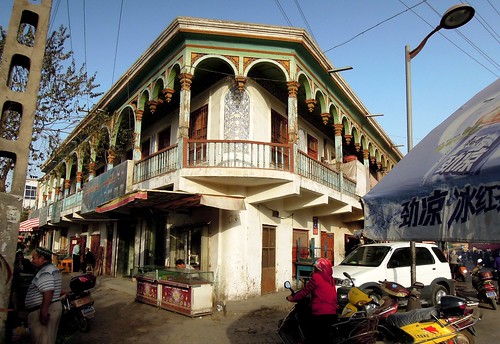
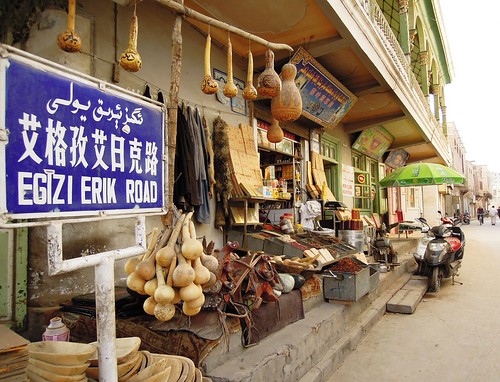
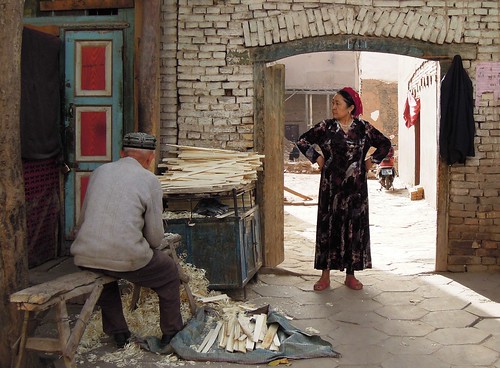
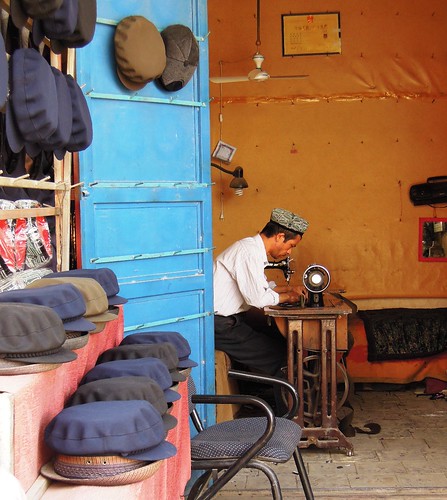
As always in China, it's hard to tell what's been preserved and what's been reconstructed. There was lots of construction work occurring in the section of Kashgar's Old Town where we stayed. Many of the original buildings have been razed for public safety reasons, which has prompted local, domestic, and international outcry.
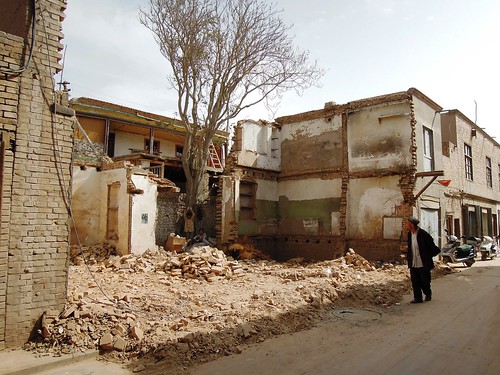
The Grand Bazaar has also been reconstructed, but its function as a major center of business has not been diminished. Being accustomed to Chinese markets, which set up at the crack of dawn, we arrived a little early, and the bazaar was strangely quiet, but things got busy by the afternoon.
Uighurs like glitter and sequins on their fabric as much as Chinese people do!
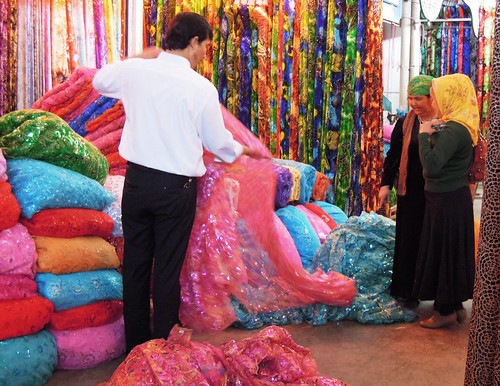
All sorts of nuts, raisins, dried fruits, and pomegranates for sale.
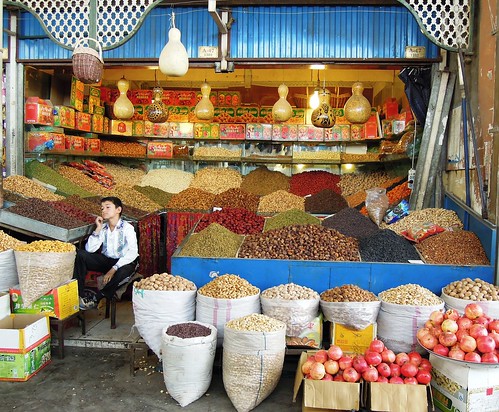
You've probably already noticed that many of the men wear a squarish hat, or doppa, on their heads. There were also lots of epically shaggy fur or wool hats for sale, which some old men seemed to insist on wearing despite the midday heat.
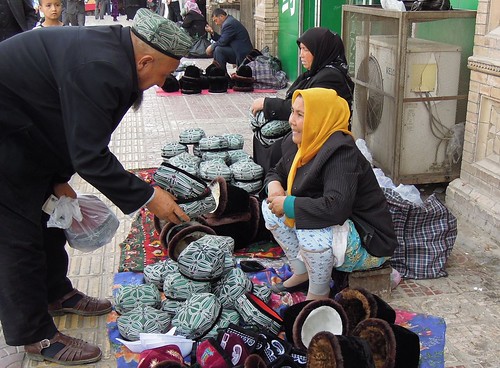
We also visited the mausoleum of Abakh Hoja, a 17th century ruler of southern Xinjiang. According to one of the guides, this beautiful mausoleum was built in the 1600s without the use of a single wooden peg. The tiles are all original, and are not replaced when they fall off.
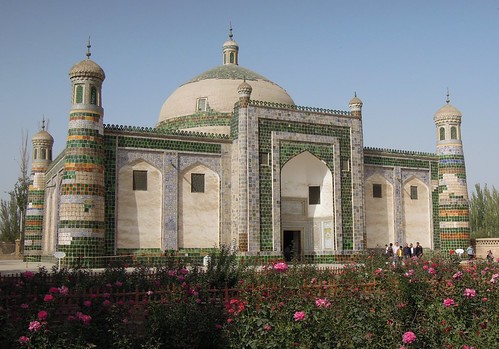
Sight-seeing in Kashgar was interesting, but I actually enjoyed Yarkand's old town and Hotan's bazaar more than Kashgar's. My favorite part of our Kashgar trip was seeing my friend and former student from DUT, Constantine (his self-selected English name). He's interesting to talk to because of his position as a modern Uighur man bridging two worlds. Educated on the East Coast for all of high school and university, fluent in Mandarin and Uighur, and quite proficient in English, he's struggling to balance his aspiration to continue his education in America and his familial duties as the son of aging parents who'd like to see him get married and have children. His educational background and language skills put him in a minority among Uighurs in Xinjiang (not to mention the fact that his sister is a doctor in New Jersey!), which has led to some feelings of cultural alienation, now that he's working a white-collar bank job in Kashgar after nine years of living in a Han Chinese world. I feel fortunate to be able to talk freely with Constantine about a variety of subjects, from the mundane to the politically sensitive.
We only had two full days in Kashgar, after which we headed east on the Silk Road. Upcoming posts: hitching rides with strangers, Uighur food, silk, rugs, jade, dancing...and so much more!
I went to that mausoleum in Kashgar too! Looks like the weather was much nicer when you went :)
ReplyDeleteCan't wait to read more, pengyou!
Hi Margaret. Love your travel descriptions and photos. Frank has a Uighur hat like the ones you saw from time he spent in Qinghai province back in 1995. You know you are welcome to visit Bangkok anytime!
ReplyDelete